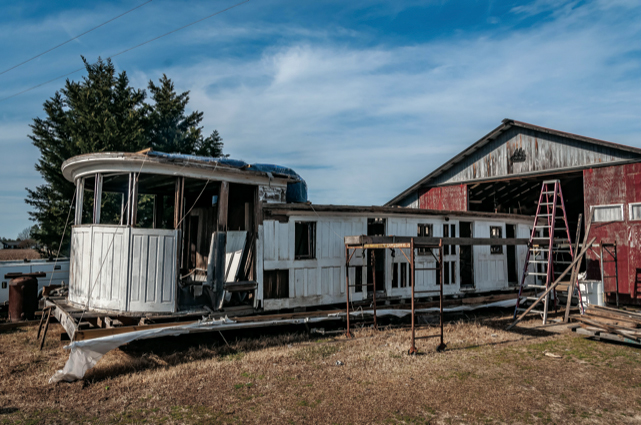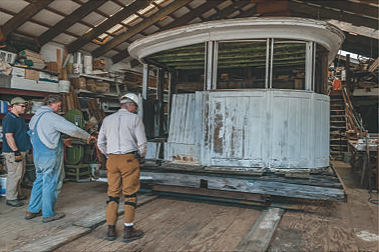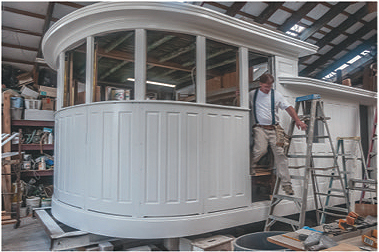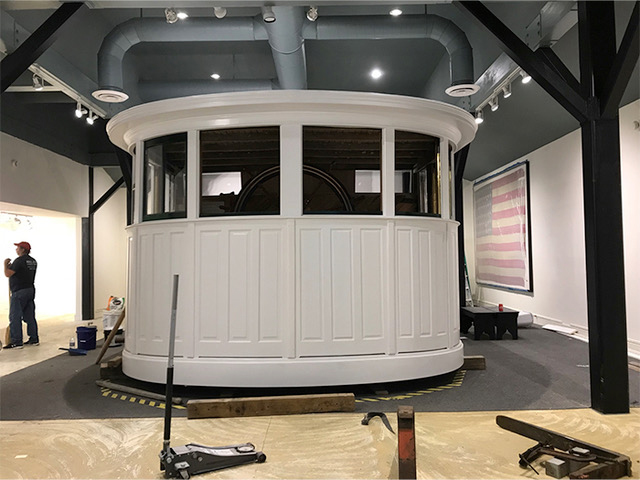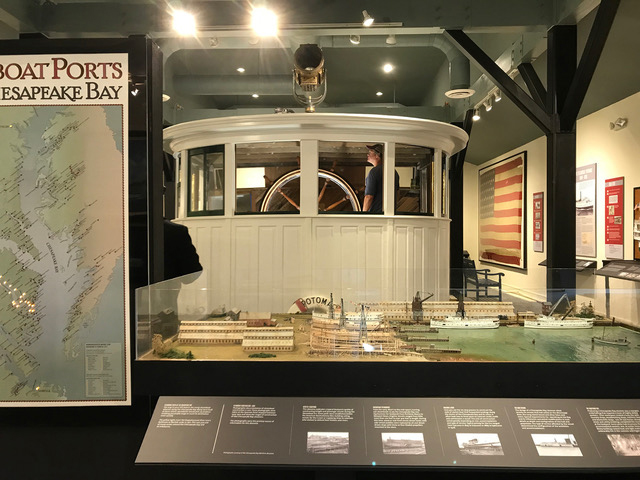Story of the Potomac Pilothouse
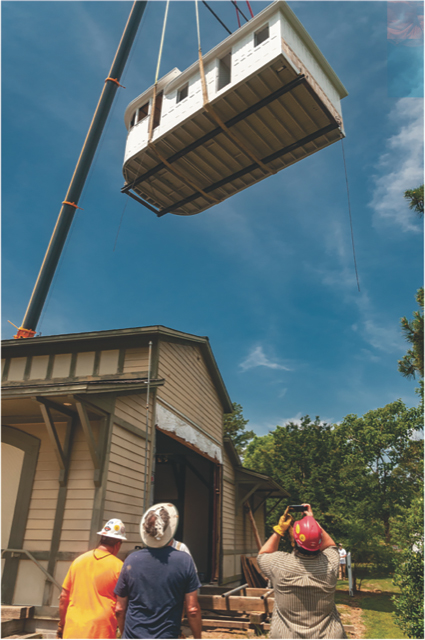 The Steamboat Era Museum is proud to include as its most valuable artifact in its collection, the largest surviving remnant of the Chesapeake Bay steamboat era – the pilothouse from the steamer “Potomac”. The pilothouse was the steamboat’s upper most structure. It consisted of the wheelhouse, captain’s quarter, and crew quarters.
The Steamboat Era Museum is proud to include as its most valuable artifact in its collection, the largest surviving remnant of the Chesapeake Bay steamboat era – the pilothouse from the steamer “Potomac”. The pilothouse was the steamboat’s upper most structure. It consisted of the wheelhouse, captain’s quarter, and crew quarters.
The Potomac was built in 1894 by the Neafie & Levy Shipyard, Philadelphia PA. She was 176 feet in length and 41 feet at the beam with 37 staterooms and a crew of 36. She served 42 years in freight and passenger service, initially between Baltimore and the Potomac River. In her later years of service the Potomac served between Baltimore and Norfolk, Virginia, including stops along the Rappahannock River.
In February 1936 the Potomac was forced into retirement when her stern was badly damaged after a collision with a freighter in icy waters in the dark of night. In 1937, the Potomac was sold to the Colonna Shipyard in Norfolk, Virginia at which time it was disassembled and her hull was made into a barge to carry pulpwood for the paper mill in West Point, Virginia. (It was a common practice to burn or disassemble a decommissioned Chesapeake Bay steamship and use the hull as a barge, which is the reason no complete ships exist today.) However, the pilothouse structure was saved by the shipyard owners, Capt. Ben and Willoughby Colonna, who barged the structure up the Rappahannock River where their family used it as a summer cottage at Taft Beach.
Today the pilothouse, which measures 14 feet wide and 25 feet long, is beginning another new journey. After years of neglect and decay, the structure was acquired by the Steamboat Era Museum in 2001 and is now in the late stages of an extensive 3-year restoration project, scheduled for completion this spring. When completed, this artifact will serve as a living example of how steamboats served to change and mold the culture and heritage of those living along the 11,684 miles of shoreline of the Chesapeake Bay and its tributaries.
In 2016, the museum began a major capital campaign to raise $350,000 for this historic project and new exhibits to tell the story of the Steamboat Era and the Steamer Potomac. The restored pilothouse will serve as the museum’s main exhibit and will become the only place in America where visitors and researchers can step aboard the last surviving intact structure from a Chesapeake Bay steamboat from the era of 1813 to 1937.
Pictured above: The Pilothouse installation day
Second row, left to right: Work begins; Spring 2016 – Moving into the workshop;
Spring 2019 – Getting ready for installation in the museum
Third Row, left to right: Pilothouse installation; SEM Exhibition hall 2020
